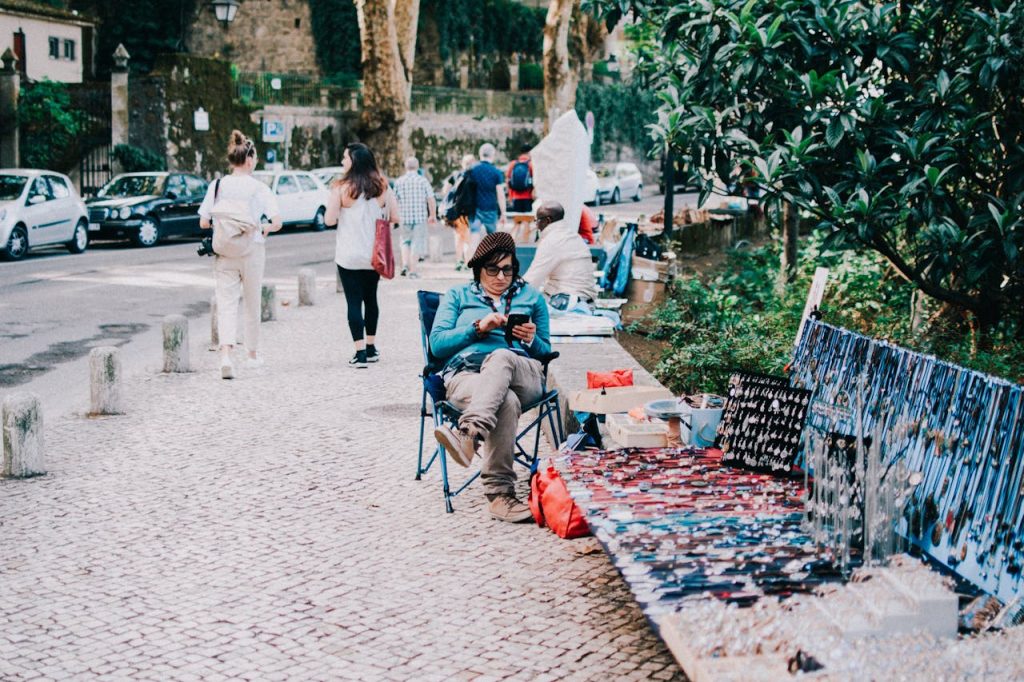Table of Contents
How to Draw Captivating Urban Scenes: A Comprehensive Guide
Urban scenes offer a dynamic interplay of architectural elements, human activity, and the atmosphere of modern life, making them an enticing subject for artists. A captivating urban scene captures not just the physicality of a cityscape but also its vibrancy and soul. Achieving this requires a combination of technical skill, observational acuity, and an understanding of artistic principles. This essay explores the essential steps and considerations for drawing urban scenes that engage and captivate.

Photo by Pexels
1. Observing and Understanding the Urban Environment
The foundation of drawing a compelling urban scene lies in understanding the environment. Cities are characterized by complexity: overlapping lines, varying perspectives, and a blend of natural and artificial elements. To navigate this complexity:
- Study the Environment: Spend time observing the city’s rhythm, noting the interaction of people with architecture and how light changes throughout the day.
- Identify Focal Points: Look for striking features such as iconic buildings, bustling streets, or contrasting textures that can anchor your composition.
- Notice the Atmosphere: Each urban area has a unique mood—busy, serene, chaotic, or melancholic. Capture this essence by observing weather, color palettes, and lighting.
2. Compositional Planning
Strong compositions make urban scenes captivating by guiding the viewer’s eye and creating a harmonious image. Effective planning involves:
- Establishing Perspective: Mastery of perspective is crucial in urban drawing. Whether using one-point, two-point, or three-point perspective, ensure that your vanishing points align with the scene’s architecture.
- Framing the Scene: Use elements like archways, trees, or window frames to create natural borders for your artwork, drawing the viewer’s attention inward.
- Dynamic Layouts: Avoid static, symmetrical arrangements. Instead, use leading lines, diagonal elements, or asymmetry to inject energy and interest.
3. Sketching and Structural Drawing
Begin with a light, loose sketch to map out the main elements of your scene. Key considerations include:
- Proportions and Scale: Ensure buildings, vehicles, and people are proportionate and scaled correctly relative to one another.
- Details vs. Simplicity: Decide where to focus your details. Overloading the scene with intricacies can overwhelm the viewer, while strategic detail placement can add emphasis.
- Line Weight and Clarity: Vary line thickness to differentiate between foreground, midground, and background. Thicker lines can bring objects forward, while thinner lines recede.
4. Adding Depth and Perspective
Urban scenes come alive when depth and dimension are skillfully portrayed. Key techniques include:
- Overlapping Elements: Layer objects such as buildings, vehicles, or people to create a sense of space.
- Atmospheric Perspective: Use lighter tones and less detail for distant objects to mimic the effect of haze or air in the atmosphere.
- Shadows and Highlights: Observe how light interacts with surfaces in your scene, casting shadows and creating highlights. These elements not only add depth but also emphasize the time of day and weather conditions.
5. Capturing Human Activity
Cities are defined by their inhabitants. Including people and human activities can add a sense of life and scale to your urban scene:
- Gestures and Poses: Focus on natural, dynamic poses to convey motion and interaction.
- Crowd Dynamics: When drawing groups of people, emphasize clusters rather than individual details to avoid clutter.
- Cultural Indicators: Incorporate signage, clothing, or vehicles to reflect the city’s unique character.
6. Experimenting with Mediums and Techniques
The medium you choose can significantly impact the mood and style of your urban scene. Common options include:
- Ink and Pen: Ideal for precise architectural details and bold linework.
- Watercolor: Adds a soft, atmospheric quality, perfect for capturing light and weather effects.
- Pencil and Charcoal: Useful for creating tonal depth and exploring light and shadow.
- Mixed Media: Combine mediums to highlight contrasts, such as crisp ink outlines with soft watercolor washes.
7. Developing a Unique Style
While technical mastery is essential, infusing your personal style makes your artwork stand out. Consider:
- Stylized Interpretation: Exaggerate certain features, such as towering skyscrapers or bustling crowds, to emphasize the scene’s mood.
- Experimenting with Color: Use unconventional palettes to evoke emotions or create a dreamlike atmosphere.
- Abstract Elements: Simplify or distort certain aspects of the scene for artistic effect, focusing more on impression than accuracy.
8. Enhancing the Emotional Impact
A truly captivating urban scene resonates emotionally with the viewer. To achieve this:
- Lighting and Mood: Sunset hues, rainy reflections, or foggy mornings can evoke different emotional responses.
- Storytelling: Include narrative elements, such as a street performer or a couple on a bench, to engage the viewer’s imagination.
- Dynamic Movement: Suggest motion by blurring elements like vehicles or pedestrians, capturing the city’s energy.
9. Practice and Patience
Mastering urban drawing takes consistent practice and patience. Regularly sketching from life helps develop your observational skills and visual memory. Additionally:
- Seek Inspiration: Study the works of urban sketchers and artists who excel in this genre to learn new techniques.
- Accept Imperfection: Urban scenes are inherently chaotic. Embrace this by letting your drawings reflect the spontaneous, imperfect beauty of city life.
Conclusion
Drawing captivating urban scenes is a rewarding challenge that combines technical skill, creative expression, and emotional resonance. By observing the environment, planning your composition, mastering perspective, and infusing your work with personal style, you can create artwork that not only depicts urban spaces but also brings them to life. As you refine your techniques and develop your artistic voice, your urban scenes will not only captivate but also tell compelling stories of the cities they portray.


No responses yet